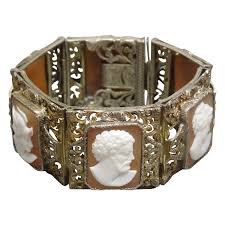Anyone use this? Not sure what the advantage is over regular electric fencing?
Sorry, don’t know what it is.
The manufacturer says it is a polymer fence (similar to fishing line) A polymer is non-conductive,
it Appears but really is not very clear that if wanting a charged line you need to run an addition traditional metallic fence line using standard fence charger
It appears that the selling points are cheaper to ship and supposed benefit of giving by being able to stretch up to 20% when subjected to a load (horse running into ir a tree falling on it)
The ability to stretch under load and being a coated polymer is said that the line would not easily cut into an animal upon impact
OP Might want to contact manufacturer for a free sample
Cameo is non conductive, so a different product. It has some give to it if a horse hits it. We’ve had it up for 20+ years-no problems.
the website says “Cameo horse fencing is a monofilament line”, so basically a thick fishing line, neat idea, however I would be hesitant to put anything in it that really tests fence as there is no mention of its tensile strength. The Centaur wire I like to use is 1,400 lbs breaking strength per strand, as it has a steel cable in it.
I love the Centuar product, to me the best part is the t post sleeve, they make it easy to install fence, cheaply. and that would work with this Cameo fencing as well
You’re right, Centaur is a high tension product while Cameo is not. We’ve installed a lot of both over the years. There are pros and cons to both. We personally have Cameo around our pastures and have had no problems over the 20+ years. We no longer have stallions and if we did we’d probably do something a little different with them. The big selling point on Cameo is that is will give and not break. Honestly we’ve never had anybody test it other than a baby or two but not a full grown horse. Centaur makes great products but they are high tensile and there is a whole 'nother discussion on that.
It looks like a great product, the install is actually compatible with Centaur, white lightning, which is what I basically install everywhere now, however the biggest advantage to me over it is that it is less expensive.
I think it would work great for cross fencing, as long as you are not trying to contain stallions or cattle.
That said I have never “broken” my centaur fence, I have had a 2000 lbs horse jump over it hooked to a wagon, it suspended him in the air, one rail unspooled from the ratchet, but the other 2 held with little to no damage. trees have fallen on it, bent the t-posts, but as soon you move the tree and t posts the fence sprung back up. so I am a real believer in their products, plus they are made in the USA which I Like
I don’t have Cameo, but I have Finish Line, which is very similar. I love it. Super easy/quick to install, virtually zero maintenance, and extremely safe. My fence guy says he tries to talk all of his horse customers into using it after seeing how well mine has performed for the last three years.
I do use a line of low-tensile electric wire to remind the ponies to respect the fence. And I’d probably not use it for a stallion paddock because a determined horse could probably find a way to squeeze through, especially if you only have 4 strands as I do. I have had one foal fall through it, but she wiggled back in without so much as a missing hair. If I had more/closer strands (the one thing I would change about mine), I doubt that would have happened.
I’ve seen some gnarly injuries from coated wire. They are much less likely than with uncoated wire, but they do happen. And I’ve seen horses wiggle out of it, too, so it isn’t substantially more secure than Cameo/Finish Line. It is A LOT more expensive and significantly higher maintenance.
No fencing material is perfect. All have some degree of risk, whether in terms of security/escapes, injury, or both.


